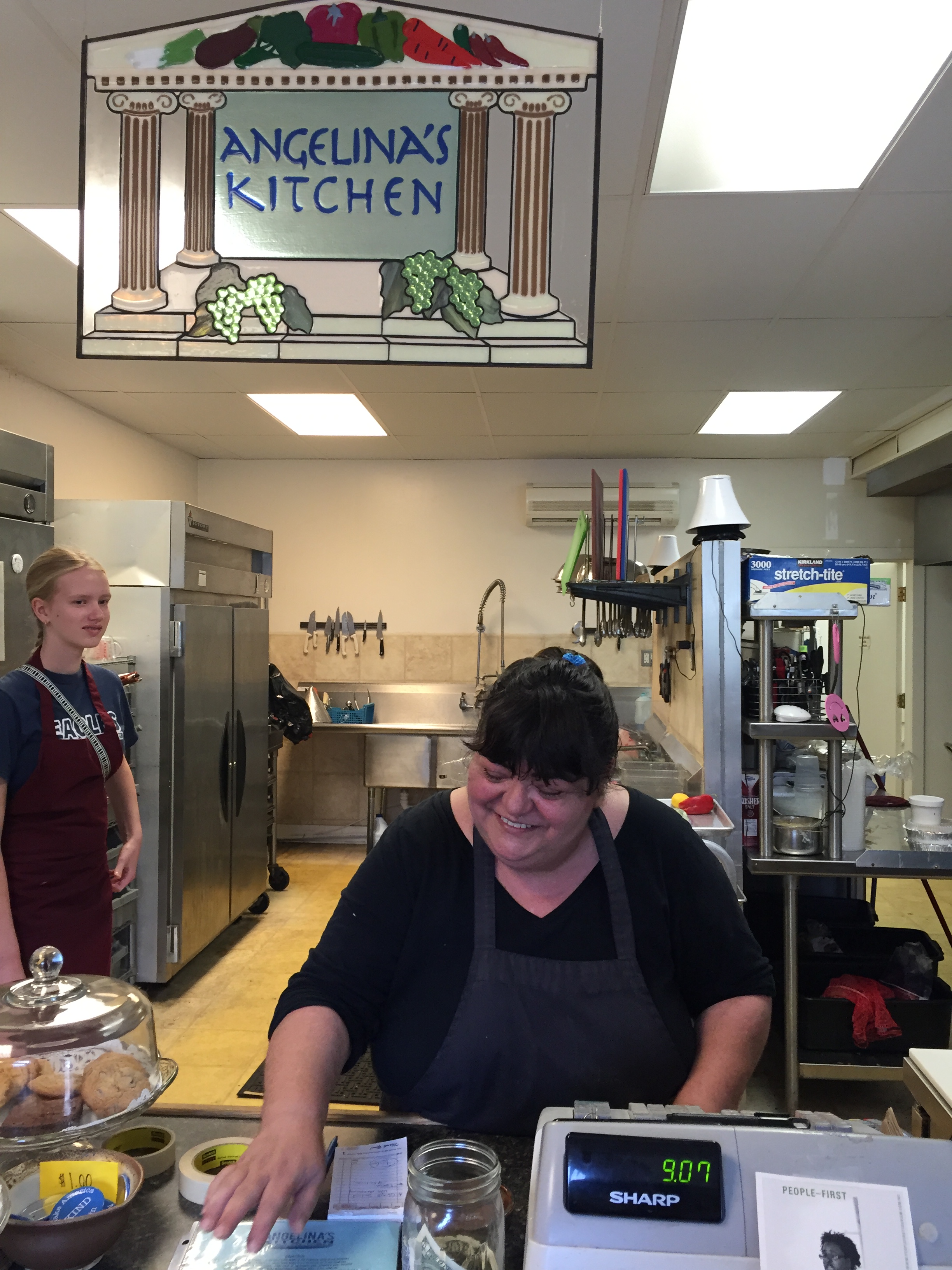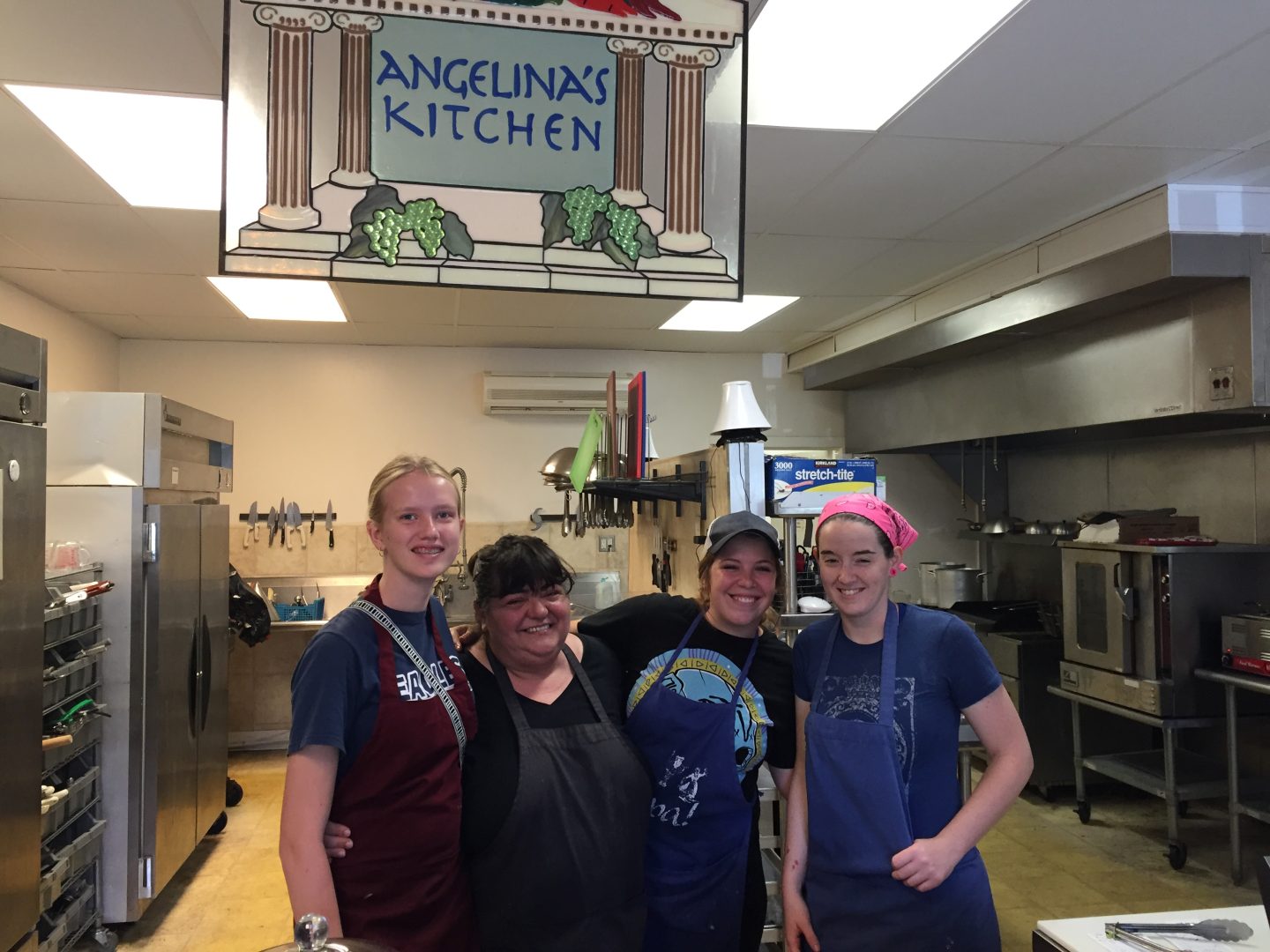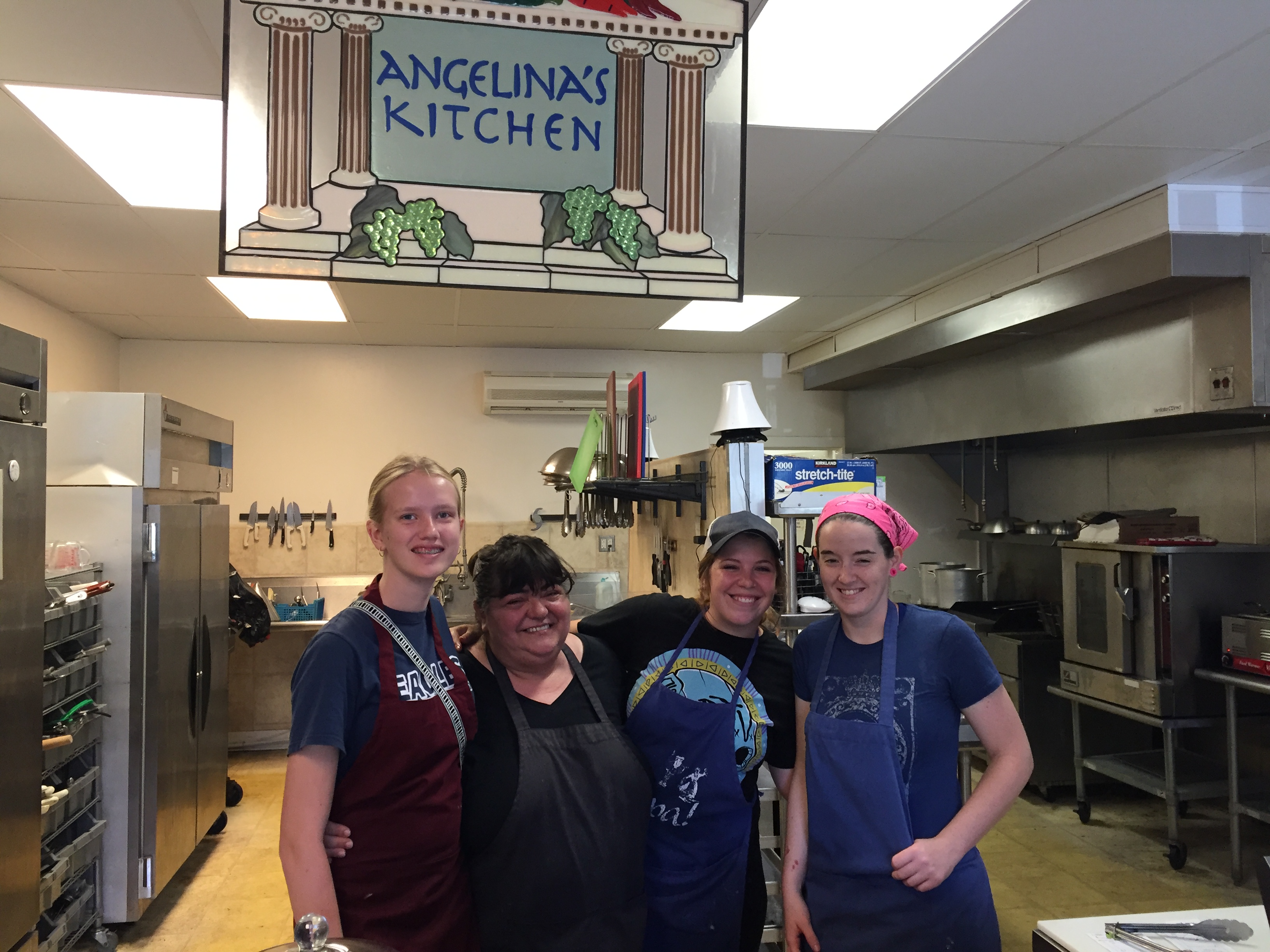
By Marianna Spence, CFSA Membership Coordinator
I sat down with Angelina Koulizakis-Battiste (with her team, second from left), chef and owner of one of Pittsboro’s favorite farm-to-table restaurants, Angelina’s Kitchen. She’s truly a local food hero, sourcing more than 70% of all ingredients from area farms and only using 100% pasture-raised meats.
I asked Angelina to share her favorite late summer produce and her techniques for choosing the best. Right off the bat, she explained how her restaurant loves being local farmers’ go-to for sale of Grade B produce, “the ugly stuff.”
“We’re happy to buy excess produce from farmers when they’re harvesting huge amounts of something at the peak of the season or when they’re in between CSAs (community supported agriculture shares), and we’re more than thrilled to buy Grade B produce,” Angelina explained. “So I’m coming at this from a different angle. I’m not looking for the prettiest tomato!”
CFSA has been bringing the farm to the table for 37 years, and with your help, we can continue to support farmers across the Carolinas as we build a healthy and resilient food system. Join us!
Without further ado, tips and tricks for choosing and using a few of Angelina’s personal favorites!
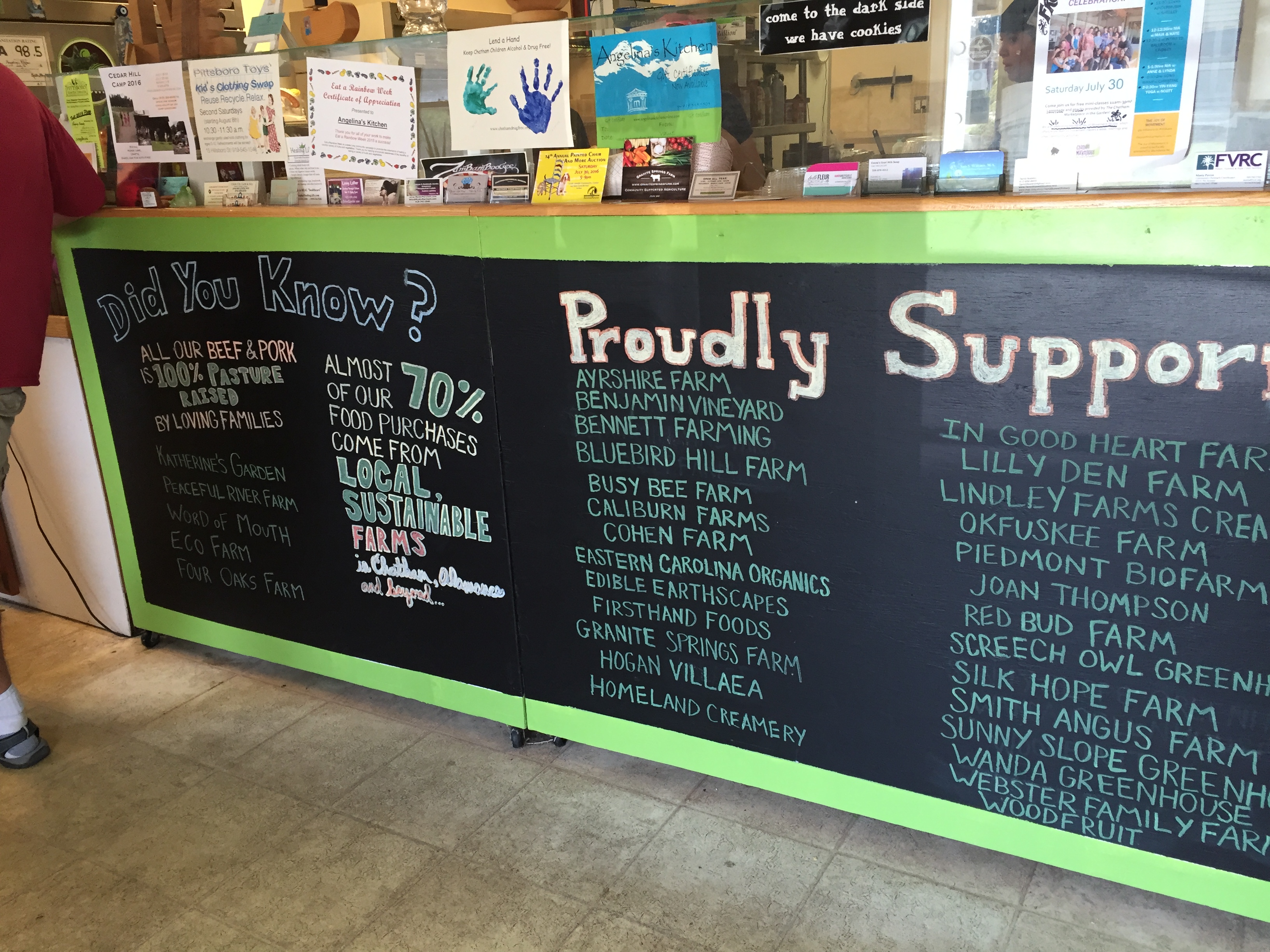
Watermelons
“You’ve just got to buy it from a farmers’ market, straight from the farm. Watermelons are substantially better if they’re not trucked around. I look for a big yellow spot where the melon sat on the ground, ripening. I also look for webbing in the yellow. That’ll be a good one. Not sure about thumping the melon; it’s never worked for me.”
Tomatoes
“Buy the odd shaped ones! They are much sweeter. I’ve learned that tomatoes and other produce compensate to make up for imperfections, and a deformed tomato has produced more sugar – it’s usually tastier! And nothing ticks off the farmer more than you poking every tomato at their market stand. If you buy them a little green or firm, let them ripen in a cardboard box or paper bag on the counter, not in the fridge and not by a banana [which emits ethylene “ripening” gas]. The ideal storage temperature is 65 – 68 degrees, so you probably don’t want to sit them in a window sill, either.
“Eat them. Eat lots of them! All summer long. If a farmer has excess, you can purchase, lightly rinse them, chop in rounds, place on a baking sheet, freeze, then store slices together in the freezer in a gallon bag (freezing them on the baking sheet before transferring to a bag keeps them from sticking together in one frozen lump). When you defrost, the skin comes right off and you can make a great sauce in the winter. This is perfect for folks who don’t want to can, but NEED tomatoes to make life complete in the fall or winter, like me!”

Eggplant
“In most grocery stores, you can usually only get the big globe eggplant, which can be bitter and tough. No wonder people think they don’t like them! Our farmers have the heirloom varieties – smaller, long and skinny varieties, with cool names like Graffiti Eggplant and Fairy Tale Eggplant. Look for nice, tight skin and bright color. Dull color might indicate a bad spot inside – though at the restaurant, we’d still buy it and cut that out.
“There’s one thing you’ve got to try – you’ll become an eggplant addict. Cube a farmers’ market fresh eggplant, toss with extra virgin olive oil, salt and pepper to taste, and roast at 375 degrees for 15 minutes. That’s it! Make sure it’s soft, and when it cools, you can eat it by itself, baked with tomato sauce, or even on a salad. It will be sweet and delicious.”
Angelina’s Easy Layered Eggplant Bake “Touroulou”
In a large baking dish, layer from bottom to top (with chopped garlic and onion in between each layer):
- Thick slices of sweet potato
- Slices of white potato (any variety bought locally)
- Slice of eggplant (any variety bought locally)
- A layer of chopped squash, chopped cubanelle pepper and chopped tomatoes
- Heavy drizzle with extra virgin olive oil
- Salt and pepper to taste
- SECRET INGREDIENT: I also pour about a 1/2 cup of V8 over the dish before baking.
- Cover with foil and bake at 375 degrees for 45 minutes
- Remove foil, top with chopped parsley. Make sure there’s enough liquid (add more V8 if not), and bake uncovered for an additional 10 minutes.
Apples
“Apple season is coming up! You really want to buy organic apples. You don’t have to only purchase the perfect ones. You can get the ugly ones, core them, cut up and freeze. I then pull out a couple handfuls, blend with a touch of sparkling water, add a little bit of local honey. This makes the perfect natural applesauce. I believe we all need a little raw food in our diet.”
Leeks
“At the grocery store, leeks are very thick, usually 2 inches or more, and woody on the green leafy part. We’re trained not to eat any of the green. Local farmers’ market leeks are picked when they’re only about ½-1 inch in diameter and are much more tender. You can eat all of the green. Remove the very ends, cut in half lengthwise, chop, sautéed with butter or olive oil.”

Potatoes
(As Angelina is trying to remember the name of her favorite variety of potato, she’s pulled out her phone and is running through a list of our local farmer heroes, calling a few up to see if they can jog her memory! She calls Meredith Leight of Granite Springs Farm.)
“That’s it. It’s the Carola,” she says while on the phone. “I love Carola and Kennebec potatoes. I love the purple and rose colored potatoes, too. Here’s my favorite potato salad. Mix together:
- Chopped, sautéed leeks
- Mashed avocado with lemon juice
- Cubed boiled potatoes
- Chopped spring onion
“I also use sweet potatoes in almost any way I would use a white potato. Choose sweet potatoes that that are dry with no wet or moldy spots, and store in a cool dry place. Size doesn’t matter.”
—
Angelina wraps up the list by asking if we can include local eggs and honey. “They make a huge difference,” she says. “My husband about died when he saw our honey bill, but I won’t use anything store-bought.”
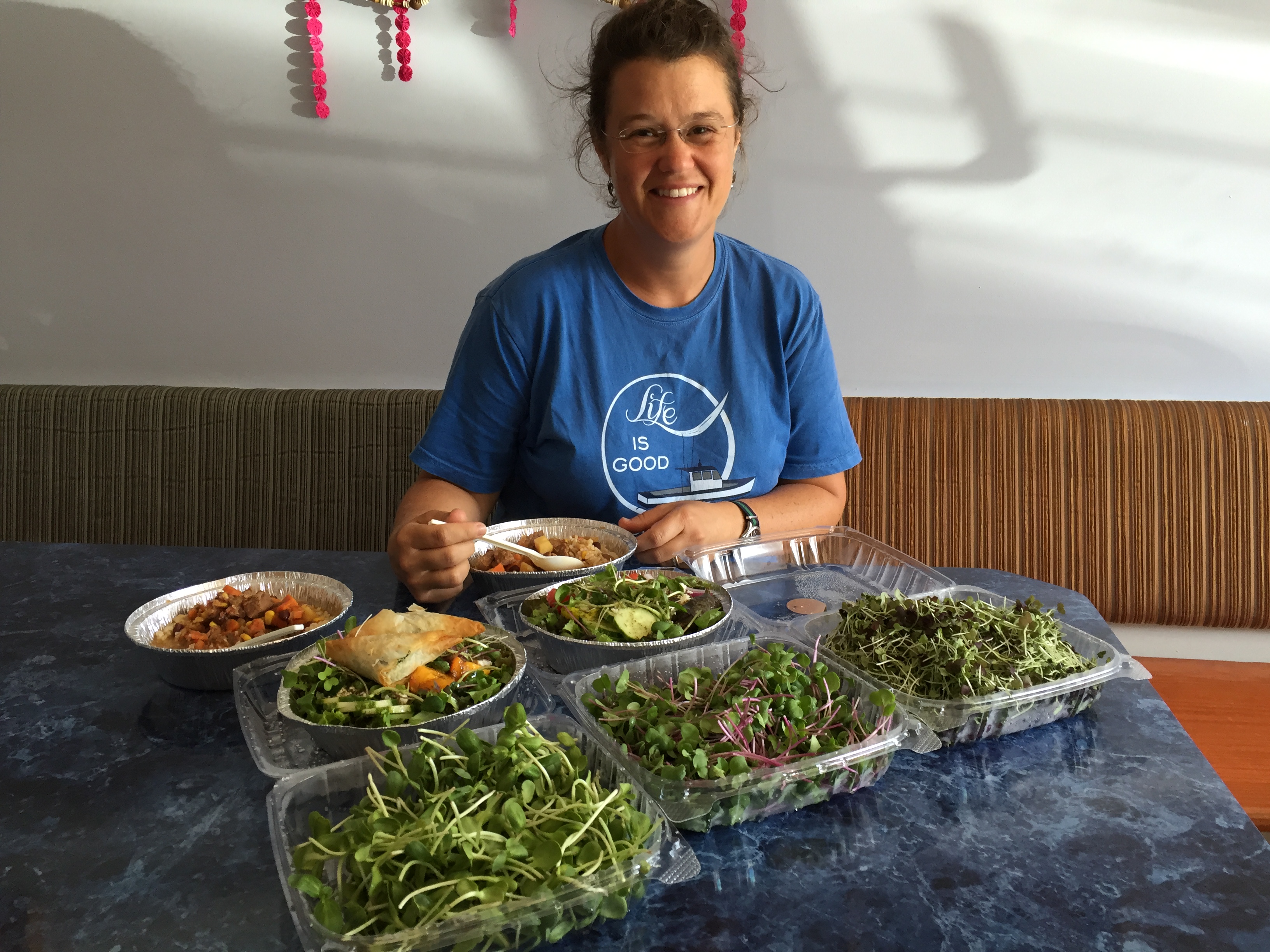
And that’s the tread of this conversation – local is prized. You see it in so many ways in the restaurant. Farmers walk in, settle this week’s transaction, then settle in for their lunch. Today, it was Susan Anderson of East Branch Ginger who has been supplying the most beautiful microgreens. Angelina, who works at the register and in the open kitchen, knows them (and their family members) each by name. It’s about delicious food, but so much more. “I don’t have a kitchen garden right now. Maybe when I retire,” said Angelina. “I let the farmers do that. They grow, I cook, you know?” she says with a laugh.
With that, she sends me off with a bag full of frozen apples from last season’s harvest and a reminder about the applesauce instructions to try out on my toddler.
